Let’s not get nit-picky over ‘mil dot’ and ‘mil hash’ etc. For this guide, they’re the same thing – a scope that uses mils.
This is why my hand-selected list includes scopes with mil dot reticles, mil hash reticles, scopes that cost more than others, and scopes that are better suited to long range while some are ideal for CQB.
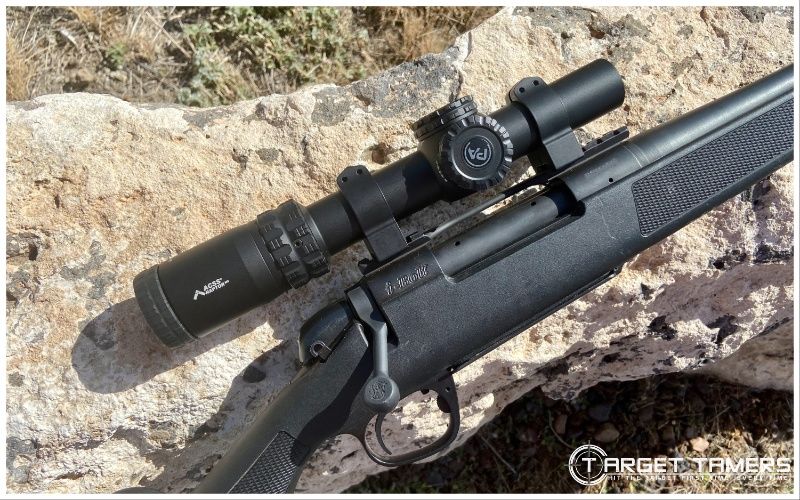
I spotlight cost, reticle types, specs, and more to compare highly ranked scopes that use the milliradian system.
Let’s mull over the top mil-based scopes!
Why Trust Us?
After hundreds of hours of hand-testing scopes in the field and at the range, and thousands more hours researching and writing about them, we feel we earn the title of experts when it comes to optics!
We purchase as many of the optics for our tests as possible, and run them through their paces to make sure they will perform at the range and in the field.
Our combined decades of experience from target shooting and hunting to competitions, troubleshooting scopes, and doing the math on both mil and moa adjustments has been integral in putting together this round-up of the best mil dot scopes.
Get the inside scoop on how we test optics here.
The Best Mil Dot Scopes in 2024
1. Leupold Mark 5HD 5-25x56 M5C3 – Best Overall
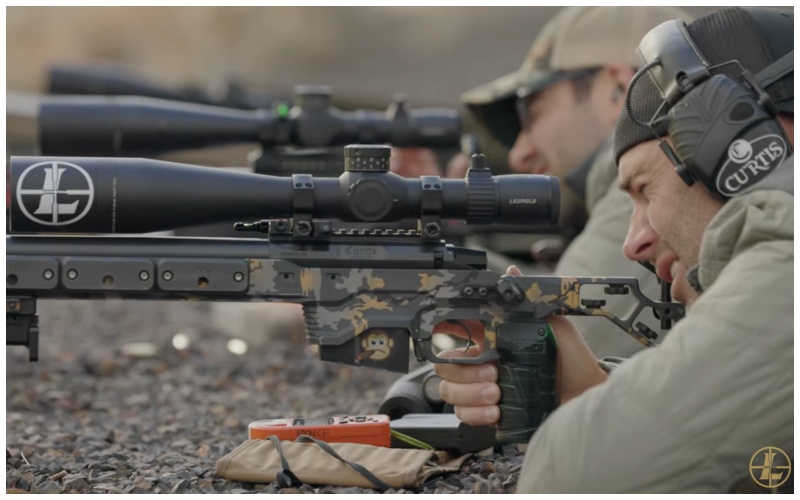
A scope like the Leupold Mark 5HD is not for recreational applications. For the money, it’s likely intended for professionals that demand the best in the hunt and competition. The Mark 5 is a long-range scope with performance to go the distance.
Pros:
- 5:1 zoom
- M5C3 turrets
- Zero lock turrets
- 35 mm tube
- Made in USA
Cons:
- Cost
The Mark 5HD is one of those scopes that is consistently talked about for its excellent performance along with its high-end features. However, unless you have the cash for it, it’s also one of those scopes that’s not a reality for most.
If you’re looking for a MIL scope, you don’t have to spend about two grand on one unless you want to. Top of the shortlist? The Mark 5HD. It has two MIL reticles to date with the PR1-MIL (model #180609) and the PR2-MIL (#180222).
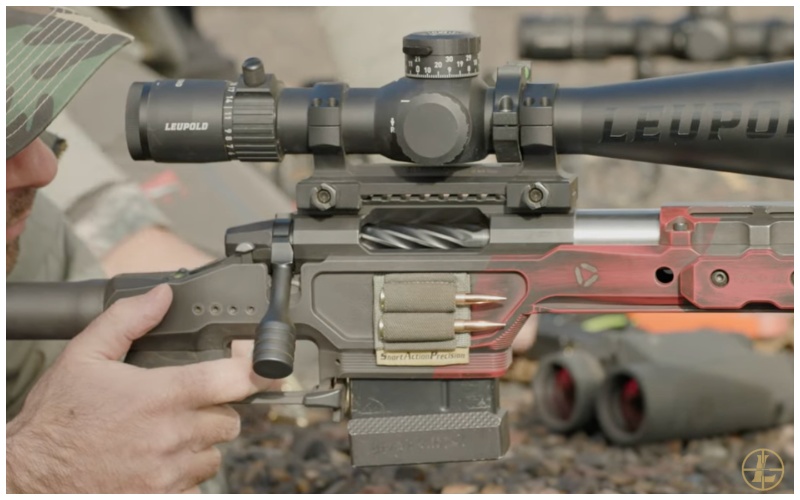
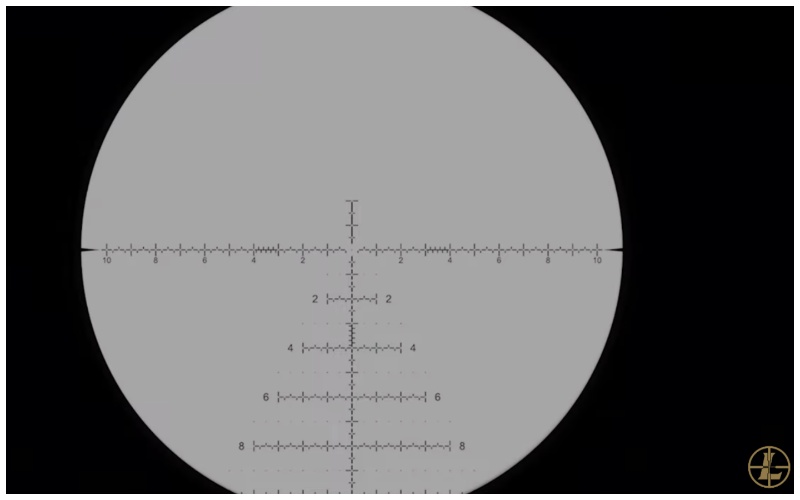
Both these scopes have 1/10 MIL turrets with three revolutions providing 10 mils of adjustment per revolution. The PR1-MIL reticle is neat and tidy with hash marks for both drop and windage. The PR2-MIL reticle adds windage holdovers in the Christmas tree style along the elevation crosshair up to the first 10 mils. The center dot in both reticles is tiny at 0.05 MIL in size!
The MIL reticles are in the FFP, so those hashmarks become more visible as you crank up the magnification which is obviously what you’re doing if you’re going to distance in ELR comps.
Along with motion sensor technology, a huge 35 mm tube, zero stop, zero lock dials, side focus, and Leupold’s professional grade optical system, the Mark 5HD has a lot of bells and whistles. If that’s what you’re after, the Mark 5 is one of the top MIL scopes you will find.
2. Maven RS3.2 5-30x50 FFP – Best for Long Range
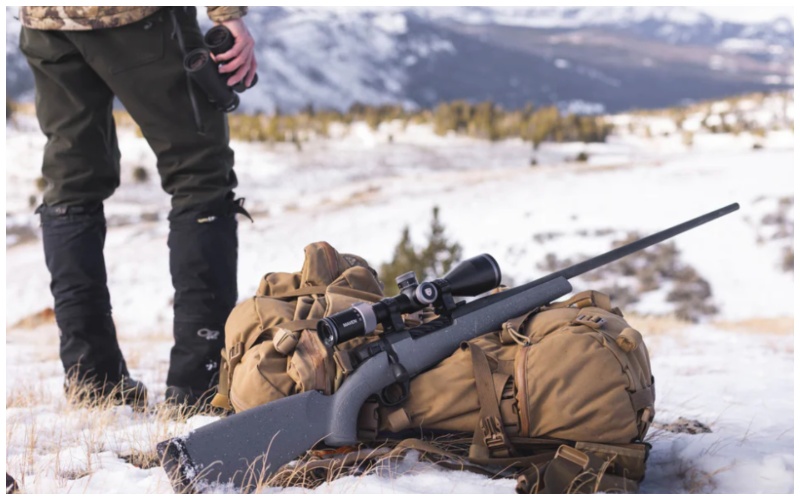
The Maven RS3.2 riflescope is based off the RS.3 scope. Though they look identical in the specs, there is a difference between the two that justifies the price increase seen with the RS3.2. The RS3.2 has a larger, highly tactile elevation turret, improved zero-stop mechanics, and capped windage.
Pros:
- 5-30x
- Glass-etched reticle
- Capped windage
- Excellent optical quality
- Made in Japan
Cons:
- No illumination
The original RS.3 had an exposed windage turret, slightly smaller and shorter elevation turret, and a zero-stop system that worked, but I suppose Maven came up with something better for the RS3.2.
As is shared between the RS series scopes, the RS.3 has fantastic optical quality. I’ve found Maven glass to be exceptional with edge-to-edge sharpness, ED glass with phase correction coatings, and high contrast and resolution that’s ideal for maxing out magnification in the 25-30x range.
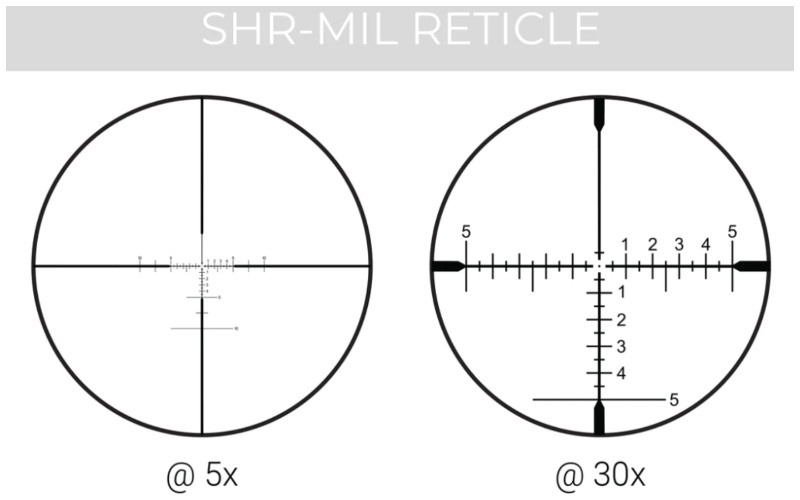
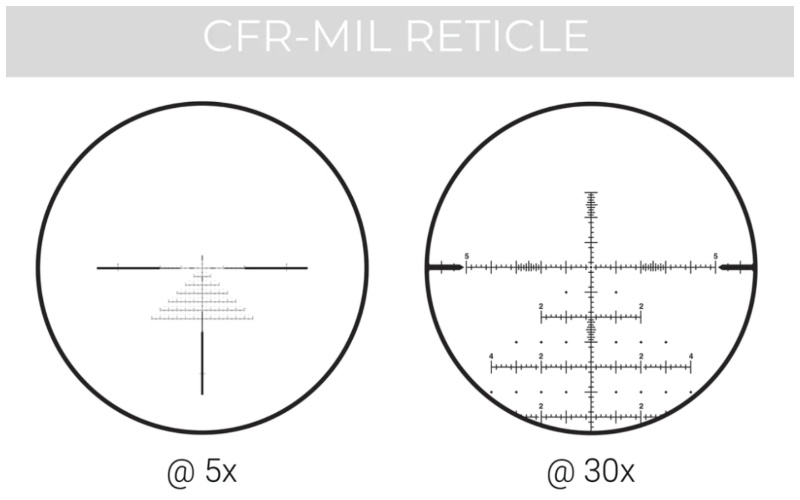
The RS3.2 has multiple reticles available and there are two MIL versions, the SHR-MIL and the CFR-MIL. The SHR is a simplified MIL reticle with hashmarks along the windage and elevation crosshairs. The CFR reticle has additional holdovers for both drop and windage that carries through along the elevation crosshair. Turrets offer 23 MIL in total elevation travel and 14.8 MILs in total windage travel. The dials are set for 0.1 MIL adjustments with 6 MILS per revolution.
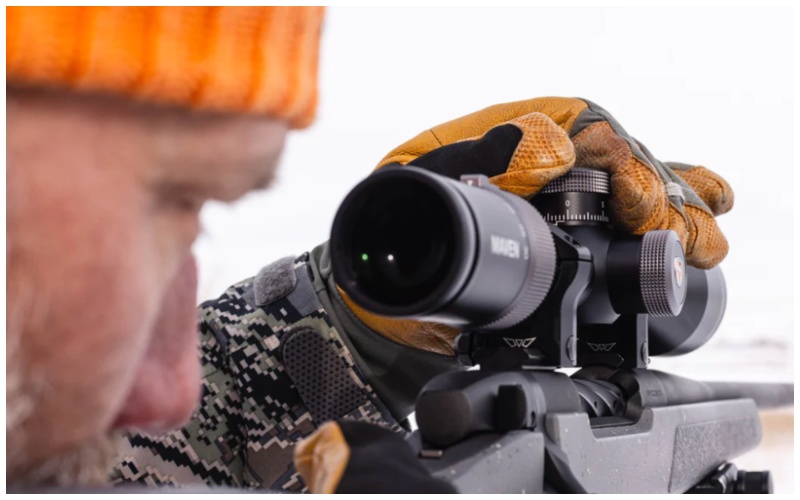
With magnification this high and the ability to make precise holdovers, the reticles are in the FFP. The only thing I wish I could see with this scope is illumination. To date, there isn’t an illuminated reticle in the RS.3 line available yet.
For the money, the Maven RS3.2 is one of the best value scopes for long-range precision shooting. Complete with an awesome warranty, Japanese glass, accurate tracking, and optical and mechanical features to keep up for long-range demands, the RS3.2 is worth the money.
3. Primary Arm GLx 1-6x24 FFP – Best LPVO
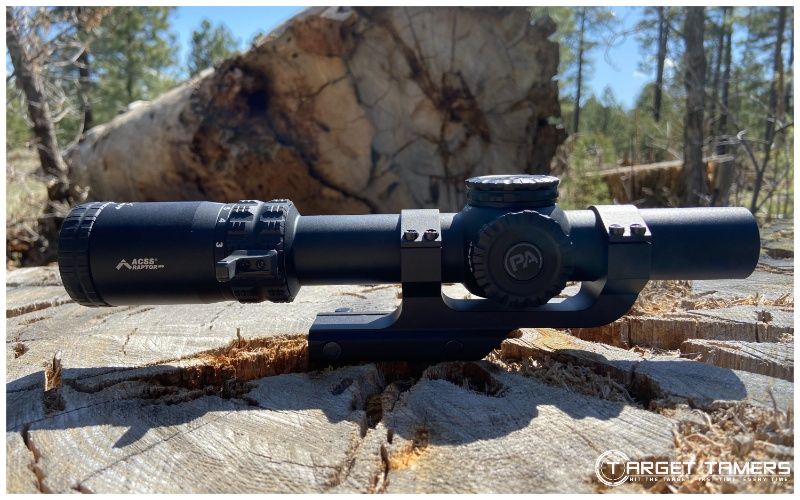
The Primary Arms GLx 1-6x24 FFP LPVO with the ACSS Raptor M6 5.56 reticle is a very nice MIL scope to have for mid-tier applications and a budget under $600. With 0.1 MIL adjustments, Auto Live, tactical turret in the box, and a throw lever, the GLx is a tactical and hunting-ready scope!
Pros:
- Cost
- MIL turrets
- Auto Live
- ACSS FFP reticle
- Interchangeable turret caps
Cons:
- Illumination
The illumination in the LPVO is definitely not daylight bright. It’s difficult to see in daylight conditions but illuminates way better than the field-tested Vortex Crossfire II 1-4x LPVO in my opinion. However, in my experience, most LPVO’s struggle to provide daylight bright illumination although they’re exceptional for low light conditions.
To help conserve battery life, the GLx 1-6x scope has Auto Live that consists of a motion sensor. It deactivates illumination after three minutes of non-movement and then reactivates when it detects movement. It works!
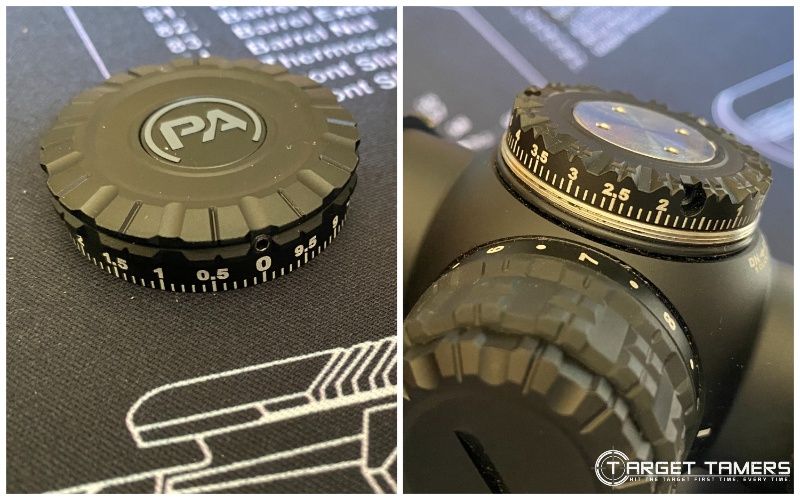
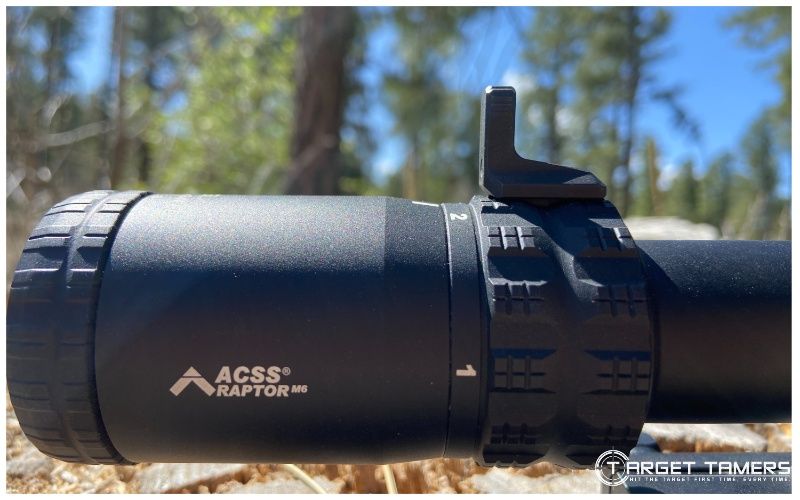
I really like the interchangeable turrets. What comes pre-installed on the GLx is a capped elevation dial. In the box is a tactical turret that’s essentially a low-profile exposed turret.
Adjustments are in 0.1 MILs with relatively audible and highly tactile clicks. They have good knurling, the base of the turrets are O-ring sealed, and you can reset the caps to your zero.
If you’re a fan of the ACSS reticle, you’ll like the simplicity and ability to holdover for both wind and bullet drop out to about 800 yards. The auto-ranging is accurate, and I tested this at 300 yards in the field.
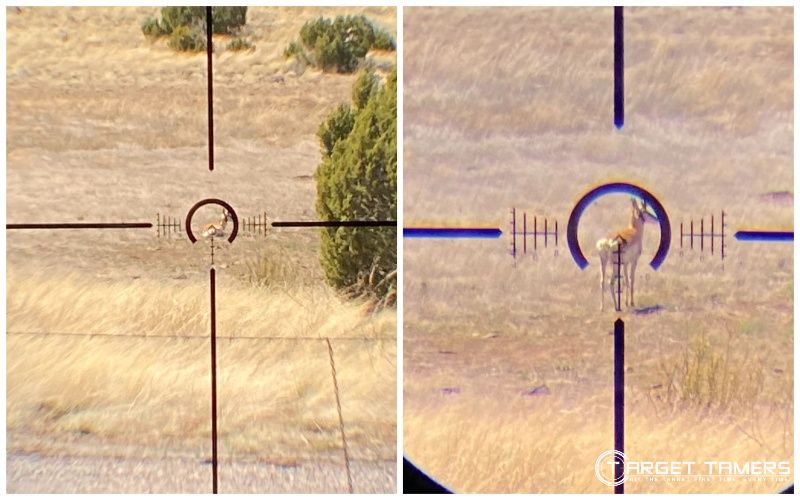
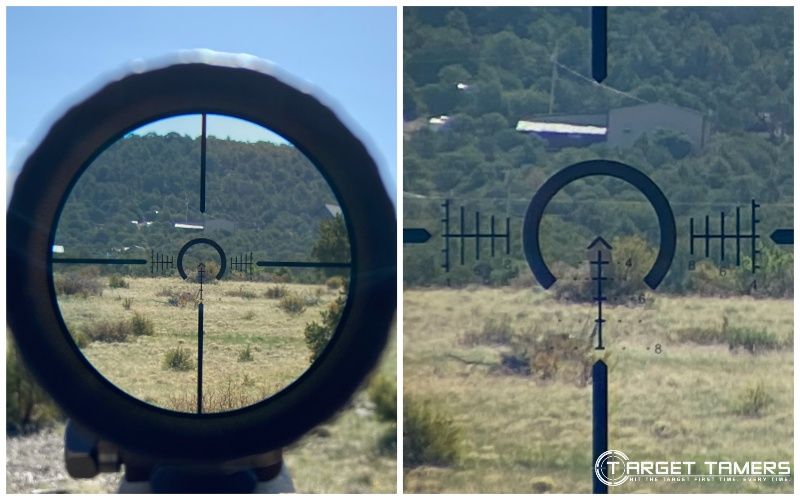
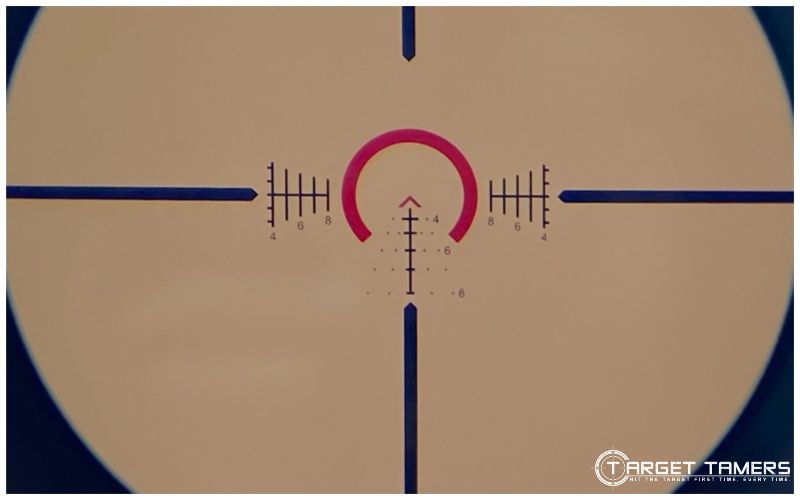
Though it’s in the FFP, there could be some concern that it may be too small at 1x to use. This is mostly true of the holdovers, but the ring draws the eye, and the center chevron is sharp and visible. As an FFP reticle at 1x, it’s still bigger and faster to use than the EBR-8 in field-tested Vortex Strike Eagle 1-8x FFP scope.
The mid-range quality is excellent for both recreational shooting and daily use in professional applications if you’re on a budget.
4. Vortex Viper HST 6-24x50 – Best Under $1000
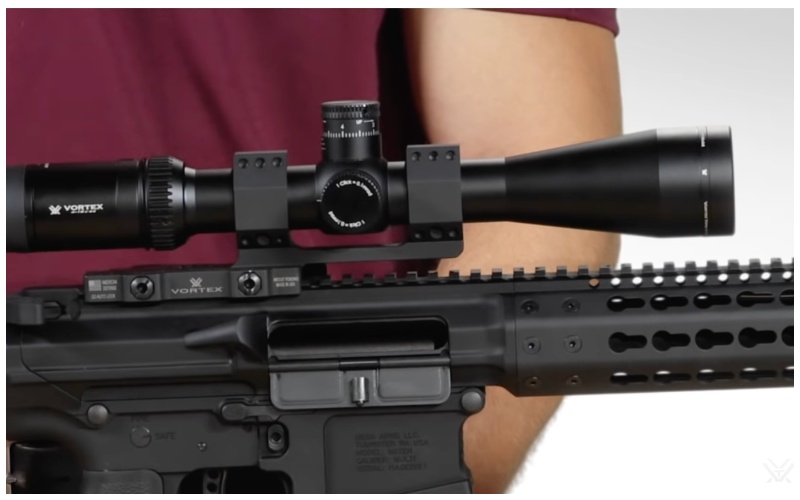
The Viper HST is clear, sharp, bright, and most importantly, the consensus is that its optics are exactly what it should be given the cost. Though it has tall, exposed turrets, it’s suited to the hunt, target shooting, and maybe some tactical work with the right gear.
Pros:
- Cost
- 6-24x
- VMR-1 MRAD reticle
- SFP reticle
- ED glass
Cons:
- Tight eyebox
Perhaps the most consistent complaint about the Viper HST is the unforgiving eyebox. If you’re running and gunning or using it for combat drills, this might not be for you. I reckon that it’s a scope intended for use at the bench or on a bipod to maximize its potential.
In relation to the eye relief, Vortex states that it’s 4”, and you can probably expect this at 6x magnification to around the mid-range point. After that, it will shorten and the eyebox will narrow. You can counter for this by ensuring you have a good weld with alignment down the optical plane. With such high magnification this is to be expected.
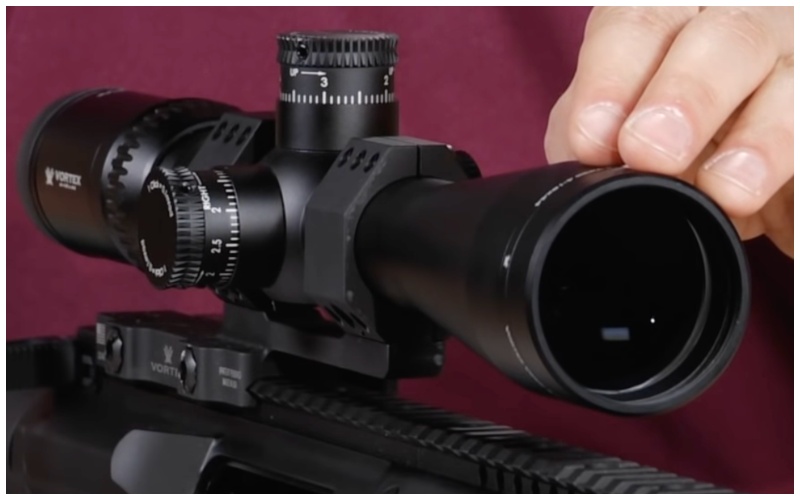
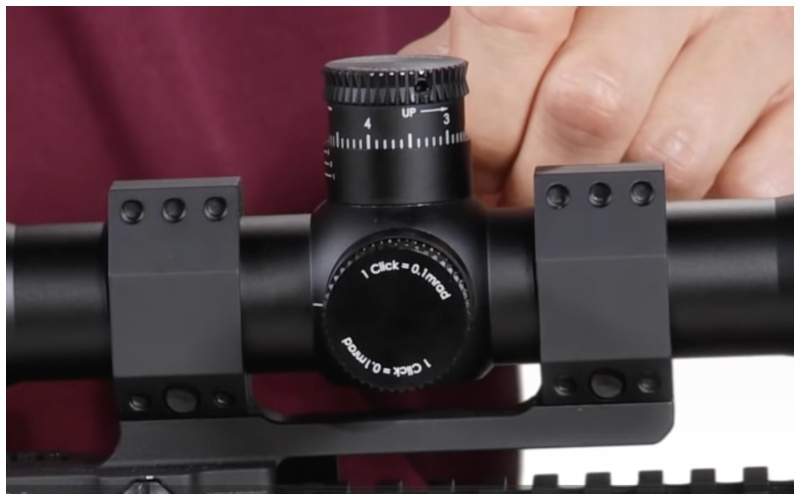
As far as being a mil dot scope, it comes with the VMR-1 reticle in MOA or MRAD. It’s simple with .045 MIL thick center crosshairs complete with windage and drop hashmarks. They could be hard to see especially without illumination. But the reticle is in the SFP, it’s simple, and it’s appropriate for long-range especially for those dialing in for windage. The crosshair posts are 0.5 MIL thick and will draw the eye to the center.
Turrets have 0.1 MRAD adjustments with a total of 19 MRAD in adjustment travel each for elevation and windage. A notable feature is that the Viper HST weighs a lightweight 22.6 oz compared to the almost two pounds of the Leupold Mark 5HD and the Maven RS3.2 scopes.
Now depending on where you get the Vortex Viper HST scope, it can cost anywhere between $700-$1000. However, the strike-through price often puts it at the lower end of this range, and for the money, it could be what you need to get to 1000 yards.
5. Vortex Diamondback Tactical 6-24x50 – Best Under $500
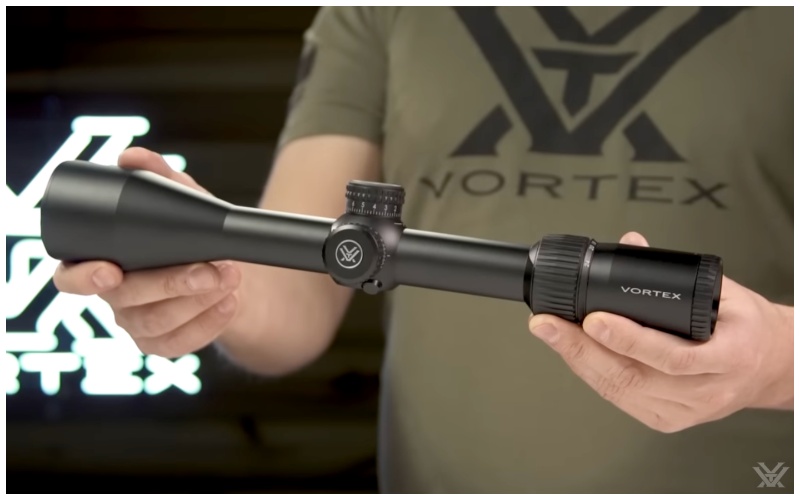
On average, the Diamondback Tactical 6-24x50 FFP scope is ideal for beginners to long-range shooting or those who want a dialed-back platform with minimal bells and whistles with quality where it’s supposed to be, in the erector system and optics. Best of all, it comes in under $500.
Pros:
- Cost
- HD lens elements
- 6-24x
- EBR-2C reticle
- FFP reticle
Cons:
- No illumination
I think the Diamondback Tactical has a lot of value for what it offers. It’s not unlike the Vortex Viper HST with the same configuration except the Diamondback Tactical has the EBR-2C reticle which is different.
The EBR-2C has a lot more going on with ranging marks and holdovers for both windage and elevation for going out to 900-1000 yards. Interestingly, the crosshairs do not meet at the center but has an open center.
The crosshairs are .03 MIL in size, so it’s very thin and is probably a little more difficult to see than the VMR-1 in the Viper HST. This is why I think it’s a shame that the Diamondback Tactical doesn’t have illumination to help make those crosshairs a little more visible and usable for low light conditions.
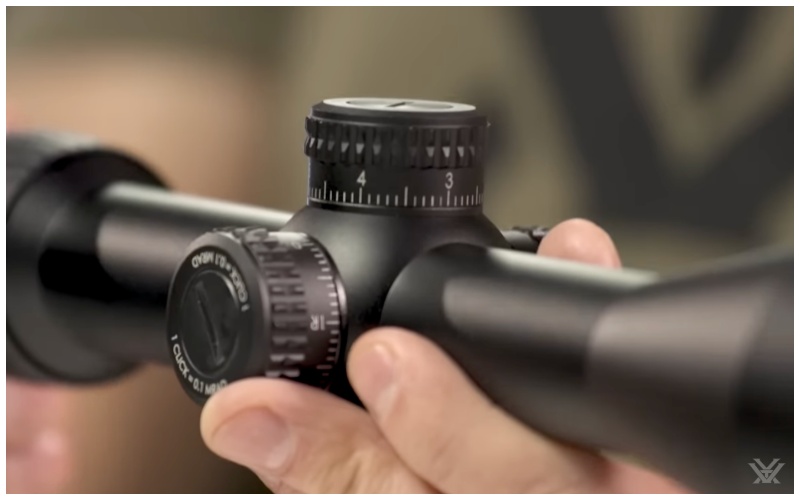
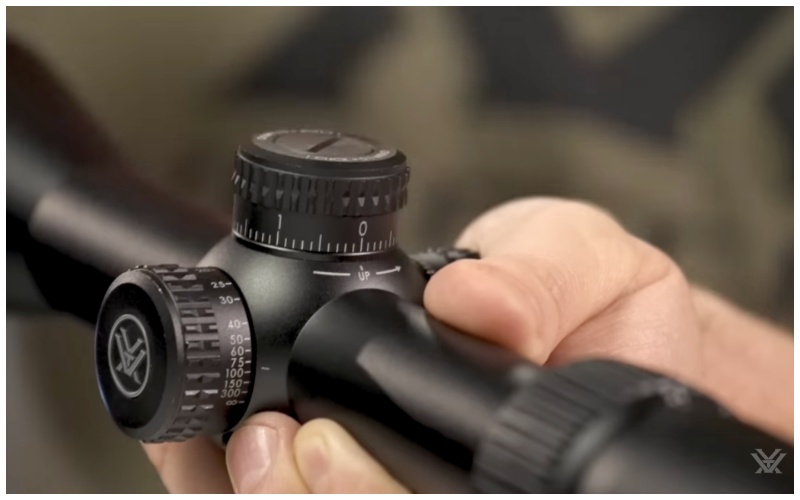
The tall and exposed turrets do not have a zero stop but a zero reset. Unfortunately, these do not have revolution markers, so you may want to mark the tube yourself. Adjustments are in 0.1 MRAD with 19 MRAD of adjustment travel for elevation and windage each.
Though the Diamondback has HD lens elements and then is defined as “XD,” it’s not very transparent about its ED group/lens situation. The best assumption is that the glass does have ED glass, but likely has less lenses and in less groups. The Viper alternative has been said to have better optical quality.
So, while you may be able to go to 1000 yards with the DB Tactical, its optical performance is probably best up to 800 yards. For the money, this offers great value for strict budgets who need long-range performance, good glass, and matching MIL turrets and MIL reticle.
6. Athlon Argos BTR Gen2 6-24x50 APMR – Best Value
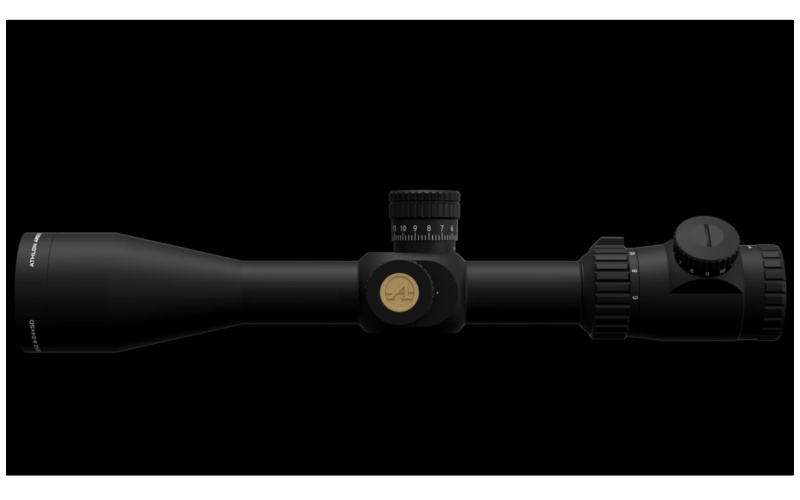
Athlon takes a different approach to value. They jam pack as much as they can into an affordable package and one such example is the Argos BTR Gen2 6-24x scope. The APMR designates the Argos as a scope with a MIL reticle.
Pros:
- Cost
- FFP reticle
- APMR MIL reticle
- Zero stop
- Argon gas
Cons:
- QC issues
Think about it. You’re getting an FFP, illuminated scope with a zero stop (elevation only) with a large configuration (6-24x50) for less than $400. Though quality has been spread throughout the entire scope, there are some quality control issues that are reported and almost expected. These range from lack of zero retention and inability to focus to illumination problems.
Fortunately, Athlon now provides a lifetime warranty that is comparable to industry-best warranties. It’s fully transferable, no receipt required, and no registration is needed. If there’s a problem, it appears that Athlon will take care of it.
For the most part, the Argos BTR Gen2 is a heavy hitter. It’s feature rich starting with its glass etched FFP reticle. The APMR is the MIL reticle and is extremely thin at 0.02 MIL in size. This is excellent for minimal subtension at maximum ranges, but it could be said to be very, very thin. I reckon what makes this usable and effective is the illumination.
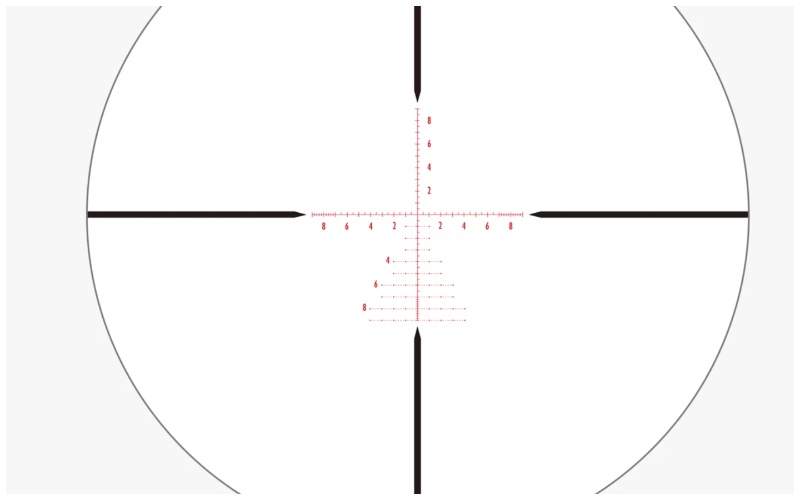
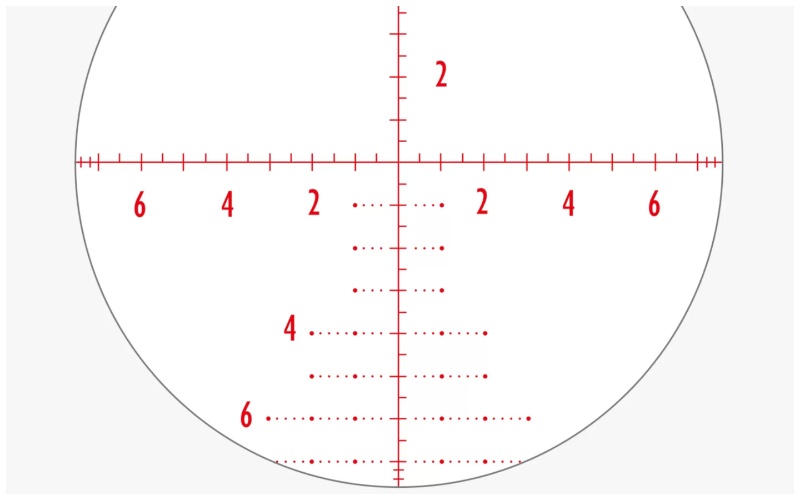
There are 11 illumination settings, adjustments are in 0.1 MIL increments, and a side focus that starts from 10 yards and goes to 500 yards then infinity. You will want to use this liberally to find good resolution and focus.
I think for its value and decent glass performance, it will be suitable for most purposes up to about 20x magnification. Beyond that, you start to lose optical performance and some of the FFP reticle gets cut off.
Overall, the reticle is great especially if you’re after an affordable MIL reticle in the FFP. The illumination feature is a must-have for this scope, and the turrets are crisp and positive. If it underperforms, it might be defective and requires a warranty claim. For the most part, the Argos is a value buy.
7. Leapers UTG 3-12x44 AO – Best Under $200
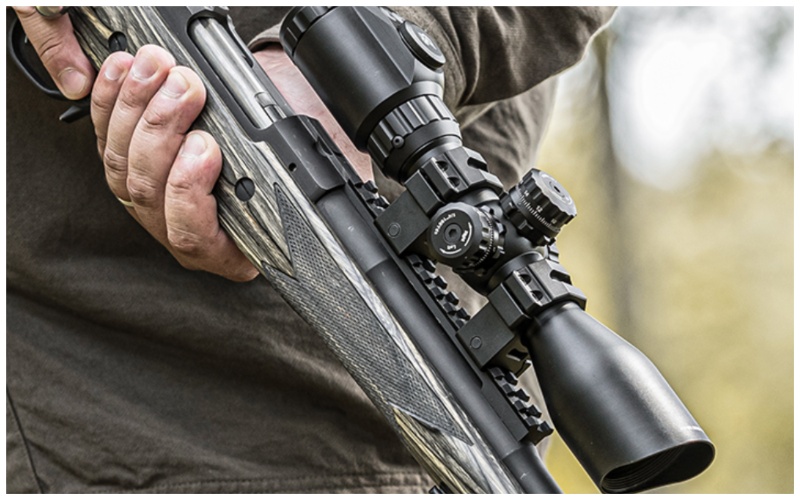
In general, the UTG 3-12x44 is the kind of scope that will appeal to those who want everything in a budget package. Coming in just over $100 for digital features and real glass lenses, the Leapers UTG scope is the ultimate scope for recreational shooting.
Pros:
- MIL dot reticle
- EZ-TAP IE system
- Zero locking target turrets
- SWAT adjustment
- Flip-up caps
Cons:
- QC issues
There are going to be those scopes that escape quality control. The ones that got away will have issues with illumination, zero retention, and overall build quality. Though there is a lifetime warranty on the scope, there are conditions, so I’d recommend buying from an authorized retailer.
The first thing I want to address is the incorrect usage of the term ‘AO.’ This scope does not have an Adjustable Objective but a side focus. Essentially, they do the same thing but the mechanics are different as it’s not set in the objective ocular but in a third turret called the side focus. This is the SWAT feature, the Side Wheel Adjustable Turret. This provides parallax correction and focus for distances from 10 yards to infinity.
As a digital scope, it has many capabilities that conventional scopes cannot provide. One such feature is the EZ-TAP IE system. This is the illumination system that offers as many as 36 colors to illuminate the reticle.
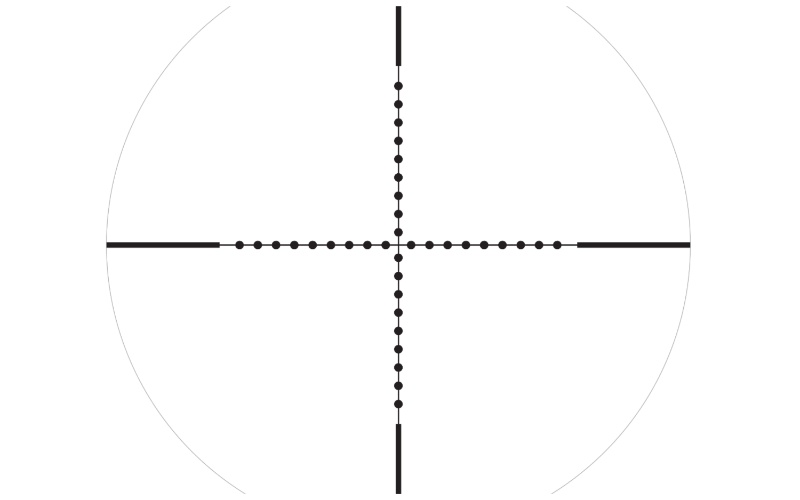
Speaking of the reticle, the UTG scope has the Mil-Dot Tactical Range Estimating Reticle (TRE). Though it has additional dots along the windage and elevation crosshairs, this is the style that is most recognizable as a ‘mil dot’ reticle.
Though the scope has a MIL reticle, it has MOA turrets. If you’re okay with that, then not a big deal. To up the value and maintain feature-rich expectations, the scope also offers zero locking turrets, flip-up caps, and a special circuit design to protect the illumination housing during recoil.
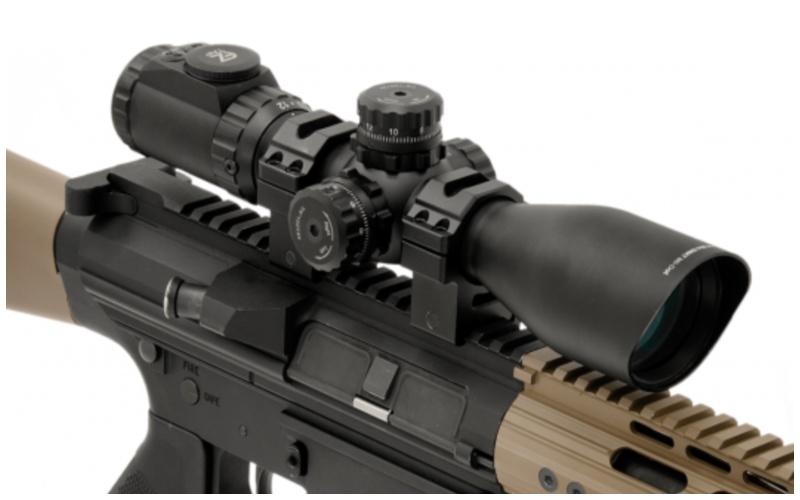
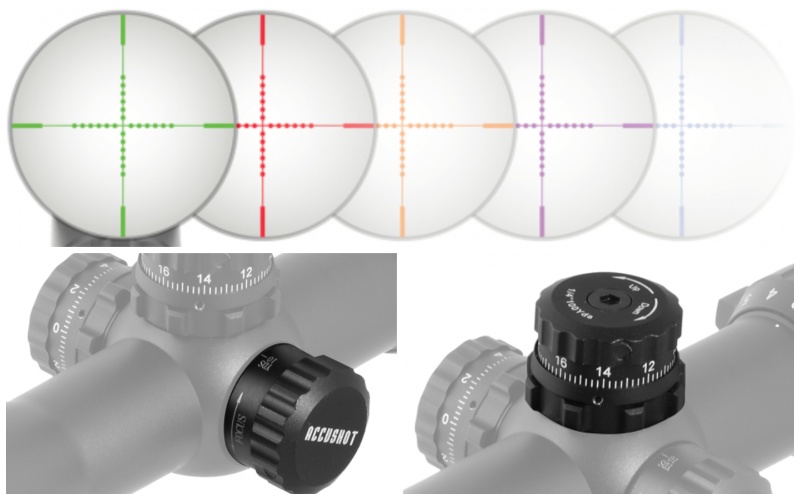
I can bet that most people will like that this is a complete setup from the get-go. You’re getting the mounting system (quick detach medium height rings) in the box.
I wouldn’t go so far as to say that this scope is a novelty item as it does have real features based on the fundamentals needed and wanted for solid scope performance. However, the quality is spread thin between all the ‘extras’ that I don’t think this is a long-term scope.
Overall durability is a concern, but for its $100 (approx.) price point, it’s a budget buy with a mil-dot reticle that will get you shooting out of the box immediately.
8. CVLife 2.5-10x40 – Best Cheap Mil Dot Scope
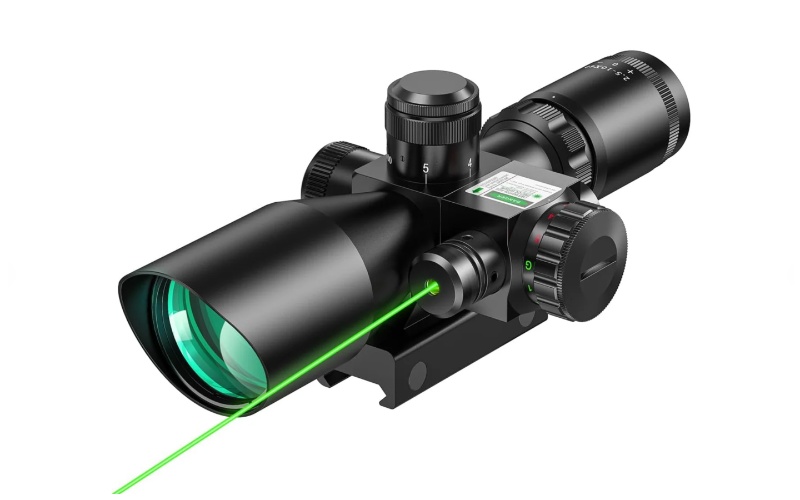
I’ve field-tested a CVLife red dot sight before and was unexpectedly surprised by its performance. It’s a decent red dot. Though I haven’t had my hands on the 2.5-10x40 mil dot scope, I expect similar performance.
Pros:
- Cost
- Mil-dot reticle
- Dual illumination
- Integrated mount
- Built-in laser
Cons:
- QC issues
What I like about the CVLife scope is that it’s relatively simple. It’s a cheap scope with real glass lenses, is under 100 bucks, and it has the classic mil-dot reticle. What makes this an upgrade from its basic design is the dual illumination, integrated Pic/Weaver mount, and built-in adjustable green laser.
Though these are ‘extra’ features, they’re not essential to its performance but is nice to have especially considering the low price point for the CVLife scope.
The laser requires 3x AG3 batteries to operate, and it’s likely not going to last very long. The illumination for the mil-dot reticle takes a CR2032 battery, but the crosshairs are black and still visible even without illumination. I strongly recommend purchasing your own fresh batteries as the included batteries are probably dead on arrival. I’ve had this happen with various scopes in the past all from different manufacturers. It’s just better if you put a new one in from the get go.
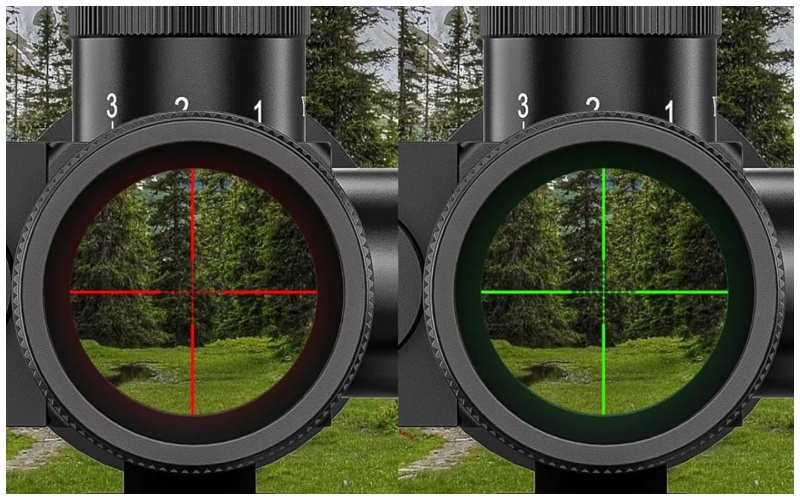
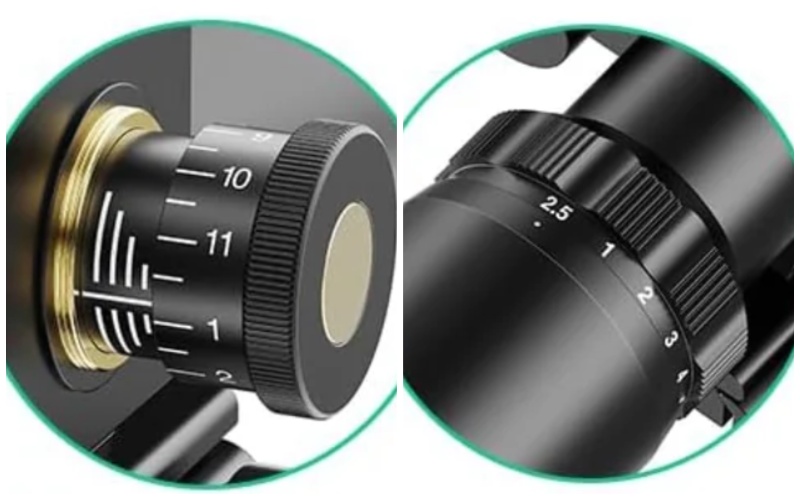
It should be noted that I recommend the CVLife scope only for recreational applications like casual target shooting, plinking, and maybe some small game hunting like jack rabbits and such. The turrets have 0.25 MOA adjustments, but the dials are only referenced every 1 MOA. The adjustments aren’t very tactile, so it’ll be easy to make mistakes and some trial and error is expected.
Overall, the CVLife is a cheap mil dot scope with some extra features. More than half the buyers find the scope sufficient for their recreational shooting. I wouldn’t put too much stock in the laser feature though as it seems to be a sore point mentioned in complaints.
If you’d rather a scope with similar features, minus the laser, check out the CVLife 3-9x40 with a mil-dot reticle, dual illumination, and included ring mounts. It’ll save you some money too!
A Guide to Choosing Mil Dot Scopes
MIL Dot VS MRAD
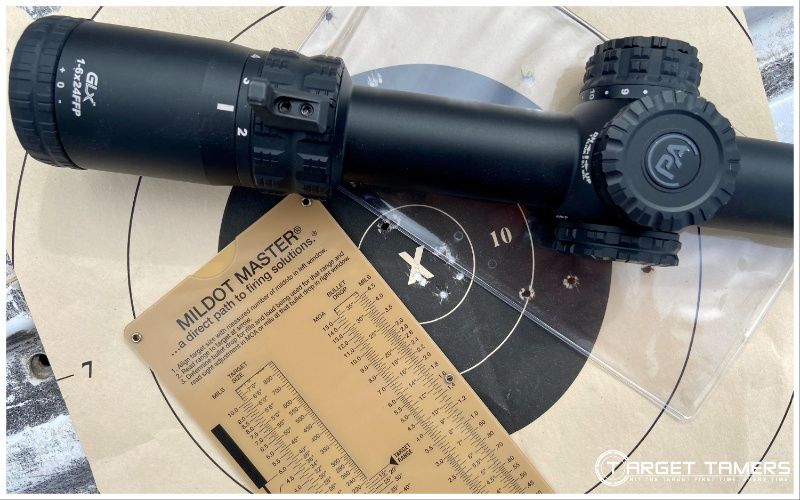
The common usage of the term ‘mil dot’ refers to one of the most recognizable reticles in military history, crosshairs with dots. Benefits include an uncluttered FOV, range estimation, and more. However, it’s base meaning “mil” refers to milliradian, a unit of angle measuring 1/1000th of a radian.
What does MRAD mean? Same thing. It’s just another shortened abbreviation for milliradian.
What does mil-hash mean? Same thing as mil dot except instead of dots along the crosshairs, it’s hashmarks.
Arguably, mil-hash and MOA reticles have defenestrated mil dot reticles as of late. Yet the habit or perhaps tradition of saying ‘mil dot’ has stuck.
I’d bet that most people who say they want a mil dot scope actually mean they want a scope with a mil-based system whether the reticle is marked with dots or hashmarks.
However, not all scopes offer MIL/MIL systems. What do I mean by this? Some scopes may indeed have a mil dot reticle but then have MOA turrets.
This used to be a common thing, but more and more scopes these days are matching. Ideally, you want a matching system because it promotes the habit of using your reticle to get the angular unit of adjustment correction that you can easily make on your dials. No calculations involved.
A mismatched system isn’t a deal breaker though. There are ways to make it work and ballistic software should be able to cater to this too, but I still recommend opting for a matching system.
For more in-depth detail about milliradians, check out our Mil Dot Explained guide!
MIL VS MOA
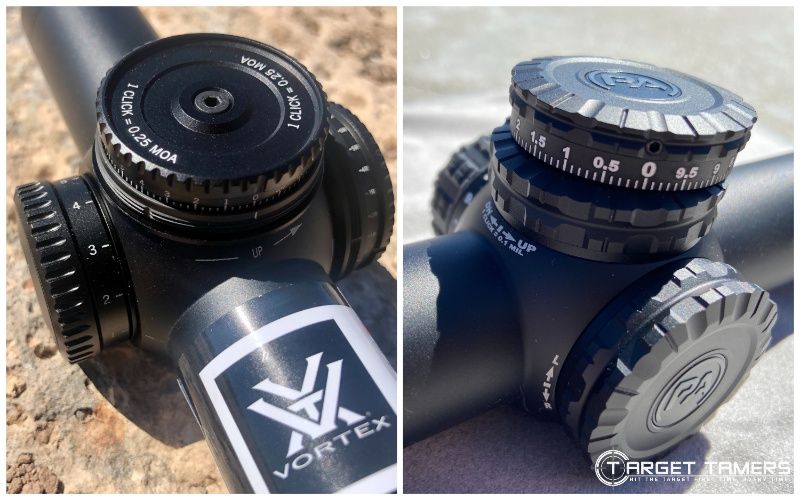
In general, neither MIL nor MOA is better than the other. It may be personal preference for a majority of target shooters and hunters, but certain applications may dictate which system is used. Ex. F-Class shooters tend to know MOA while military and tactical professionals are accustomed to mils.
As far as which is more accurate, the consensus is that MOA is more accurate than MIL, more specifically, 0.25 MOA is a finer adjustment than 0.1 MIL. However, the difference is practically irrelevant as most shooters won’t be able to hold for the miniscule difference between MOA and MIL.
If you’re having trouble deciding between mrad or moa, take a gander at our MIL VS MOA comparison guide.
Cost
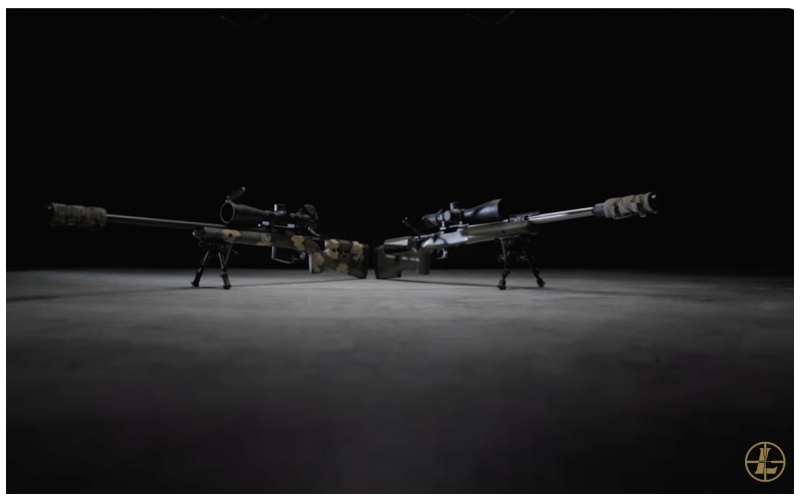
In total, the cost of a mil dot scope is not necessarily determined by the reticle or turret adjustment type. Scope costs will vary depending on multiple factors like glass quality, overall build quality, features, and more.
In relation to mil scopes, I tend to see more mis-matched (mil reticles/moa turrets) scopes in the cheaper range primarily under $200. Some of the more expensive mil scopes may offer complex and extremely precise reticle options making it much easier to use for wind-based calculations.
Though these factors may influence the price point to some degree, other components will have a greater effect on final cost.
| Product | Award | Price Range |
|---|---|---|
| Leupold Mark 5HD | Best Overall | Under $2000 |
| Maven RS3.2 | Best for Long Range | Under $1800 |
| Primary Arms GLx LPVO | Best LPVO | Under $800 |
| Vortex Viper HST | Best Under $1000 | Under $1000 |
| Vortex Diamondback Tactical | Best Under $500 | Under $500 |
| Athlon Argos BTR Gen2 | Best Value | Under $400 |
| Leapers UTG | Best Under $200 | Under $200 |
| CVLife | Best Cheap | Under $100 |
Configuration
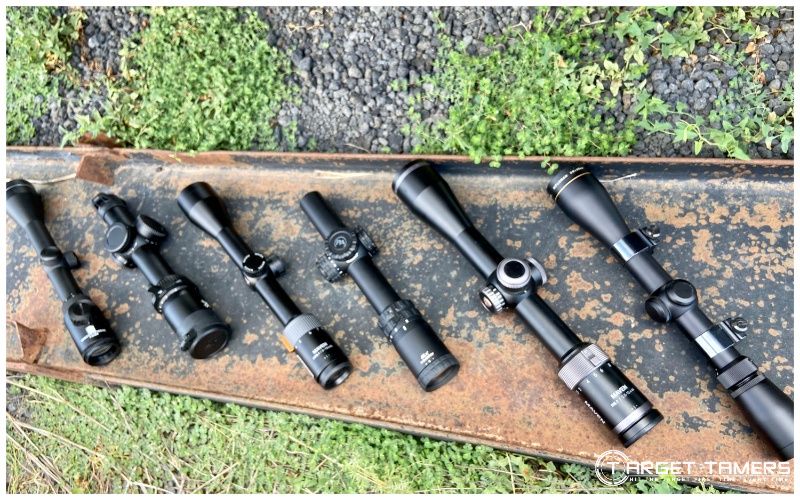
The configuration is the magnification and the objective lens size, i.e., 1-6x magnification and 24mm objective lens. The need for a larger or smaller configuration will depend on the shooting application. Mil reticles and mil dials are available in long-range scopes and CQB scopes.
Your choice of mil dot scope must be influenced by your intended application. An F-class shooter will want high magnification versus someone who is looking to clear buildings in combat drills.
| Product | Magnification | Objective Lens Size |
|---|---|---|
| Leupold Mark 5HD | 5-25x | 56 mm |
| Maven RS3.2 | 5-30x | 50 mm |
| Primary Arms GLx LPVO | 1-6x | 24 mm |
| Vortex Viper HST | 6-24x | 50 mm |
| Vortex Diamondback Tactical | 6-24x | 50 mm |
| Athlon Argos BTR Gen2 | 6-24x | 50 mm |
| Leapers UTG | 3-12x | 44 mm |
| CVLife | 2.5-10x | 40 mm |
Specs

Overall, the specs will differ between scopes such as field of view, eye relief, and scope dimensions. These specs are not affected by the choice of mil reticle or adjustments. However they are numbers to know as you compare scopes and narrow down the potential mil dot scope for you.
| Product | Field of View (@ 100 yds) | Eye Relief | Dimensions (Length/Tube) | Weight |
|---|---|---|---|---|
| Leupold Mark 5HD | 20.4-4.2 ft | 3.8-3.6” | 15.7”/35 mm | 30 oz |
| Maven RS3.2 | 22.2-3.7 ft | 3.8-3.4” | 13.03”/30 mm | 27.8 oz |
| Primary Arms GLx LPVO | 104.7-18.3 ft | 3.5-3.3” | 10.25”/30 mm | 21.3 oz |
| Vortex Viper HST | 17.8-5.1 ft | 4” | 15.41”/30 mm | 22.6 oz |
| Vortex Diamondback Tactical | 18-4.5 ft | 3.9” | 14.28”/30 mm | 24.6 oz |
| Athlon Argos BTR Gen2 | 16.7-4.5 ft | 3.3” | 14.1”/30 mm | 30.3 oz |
| Leapers UTG | 32-10 ft | 3.4-3” | 10.4”/30 mm | 23.2 oz |
| CVLife | 40.38-13.41 ft | 3.94-2.95” | 12.6”/1” | 15 oz |
Reticle Type & Turrets
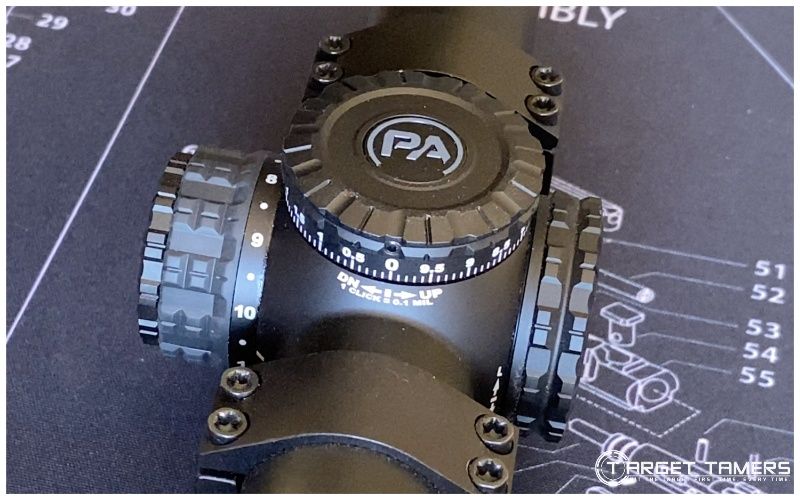
Mil-based reticles are all different. It’s essential to examine reticle subtensions to determine if it’s right for the shooting application. This is also where having a MIL/MIL system is best as the reticle is used to determine adjustment correction without having to do math calculations.
On top of all that, the mil reticle will be placed in either the first focal plane or the rear focal plane. Where the reticle is placed will determine if it changes size throughout the magnification range or remains static.
Benefits of the SFP reticle include its static size and high visibility regardless of magnification, however it’s only accurate for holding over at one magnification setting usually at max power.
Benefits of the FFP reticle include its larger size making it easier to see as you increase magnification. This means that subtension remains the same meaning you can holdover accurately at any magnification setting.
For pros and cons on FFP and SFP reticles, scope out our explanation guide on it.
| Product | Reticle | Focal Plane | Turret System | Adjustments |
|---|---|---|---|---|
| Leupold Mark 5HD | PR1-MIL & PR2-MIL | FFP | MIL | 0.1 MIL |
| Maven RS3.2 | SHR-MIL & CFR-MIL | FFP | MIL | 0.1 MIL |
| Primary Arms GLx LPVO | ACSS Raptor M6 5.56 | FFP | MIL | 0.1 MIL |
| Vortex Viper HST | VMR-1 MRAD | SFP | MIL | .1 MIL |
| Vortex Diamondback Tactical | EBR-2C MRAD | FFP | MIL | .1 MIL |
| Athlon Argos BTR Gen2 | APMR | FFP | MIL | 0.1 MIL |
| Leapers UTG | Mil dot | SFP | MOA | .25 MOA |
| CVLife | Mil dot | SFP | MOA | .25 MOA |
Warranty
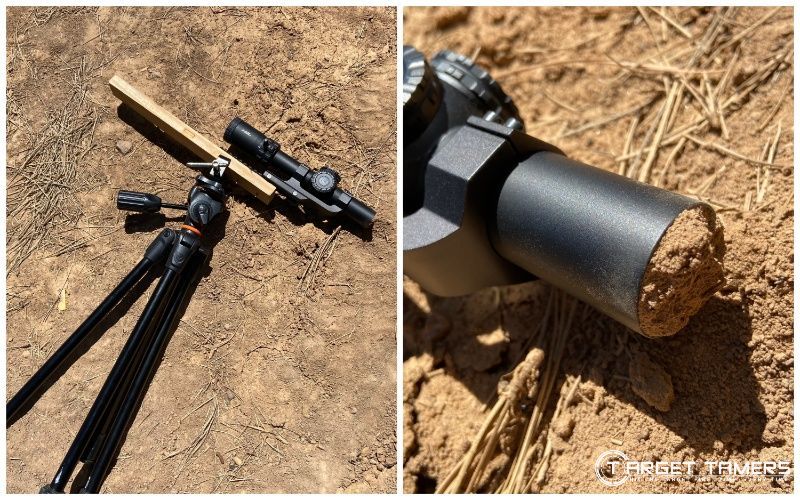
Most manufacturers have stepped up to the plate to compete when it comes to warranty coverage. The best warranties offer unlimited lifetime coverage and are fully transferable with no conditions to provide proof of purchase or registration. However, some warranties are lifetime but have conditions.
| Product | Warranty | Warranty Features |
|---|---|---|
| Leupold Mark 5HD | Lifetime Guarantee | Lifetime, no receipt or registration required |
| Maven RS3.2 | Unconditional Lifetime Warranty | Unconditional, lifetime, owner transferable, no receipt required |
| Primary Arms GLx LPVO | Limited Lifetime Warranty | Lifetime, no receipt or registration required |
| Vortex Viper HST | VIP Warranty | Unconditional, lifetime, unlimited |
| Vortex Diamondback Tactical | VIP Warranty | Unconditional, lifetime, unlimited |
| Athlon Argos BTR Gen2 | Lifetime Warranty | Lifetime, owner transferable, no receipt or registration required |
| Leapers UTG | Lifetime Warranty | Lifetime, proof of purchase may be required to expedite service |
| CVLife | No warranty (Return Policy) | 30 days only, proof of purchase required, partial refund may be granted |
FAQ's
Overall, neither milliradians nor minute of angle measurements are better than the other. They’re both a unit of angle measurement to help determine and change the point of impact. Mils may be easier to use due to the 10 base units while MOA is more familiar in the United States.
For comparisons between mils and moa, we have a MIL VS MOA guide on it.
The space between each dot on a mil-dot reticle is 1 MIL. On a standard mil-dot reticle, each dot is approximately 0.25 mils in diameter. Mil-hash reticles vary with hashmarks spaced apart at 0.1 mil, 0.5 mil, 1 mil, etc. increments. It’s vital to get reticle subtension specs for these values.
Mils are an angle and do not require linear measurement to use the mil-based system. However, 1 MIL is equal to 10 centimeters at 100 meters or 3.6 inches at 100 yards. Since many mil scopes adjust in 0.1 (1/10th) mil increments, one click would equate to .36” at 100 yards or 1 cm at 100 meters.
To read all about milliradians in easy English, look over our Mil Explained guide.
Straight to the point, there is no reason you can’t hunt with a mil reticle. It really depends on what measuring system you know best, what you’re comfortable with, and what reticle type is appropriate for your hunt.
On average, many mil-based scopes have .1 mil adjustments meaning that one click equates to a .1 mil adjustment. Thus, 10 clicks equates to 1 mil. Scopes differ in that each turret revolution will offer a set amount of mil adjustments and each turret will max out in total adjustment travel.
Is a Mil Scope Right for You?
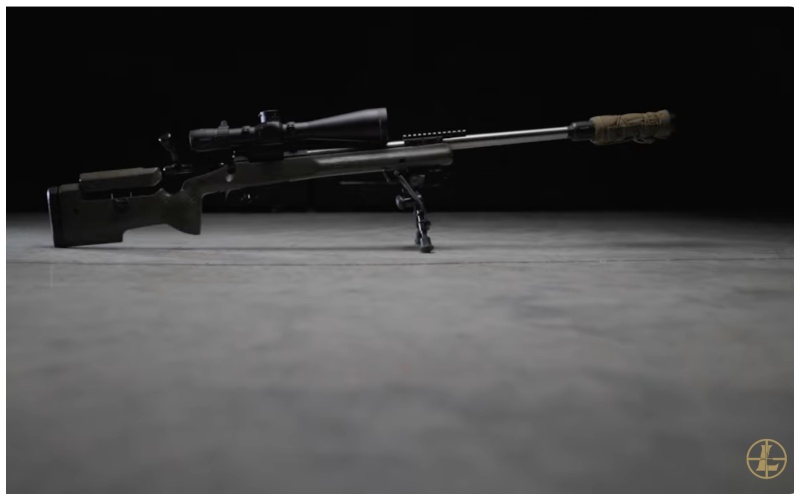
For most average shooting applications, the recommendation is to stick with what you know. If you’re learning to range with your reticle, it can be easier to do with mils. Some tactical or competing shooters may communicate in mils, so it’s easier to do this if you speak their language, so to speak.
I think it’s less about mils versus moa than it is about having matching values from the reticle and the turrets especially if you holdover a lot. Mils are convenient for range estimations and target sizing, but laser rangefinders do that pretty well these days.
You don’t need to make things confusing by incorporating linear distance. You have a calibrated ruler right on your glass – the mil reticle, use it.
Further Reading



